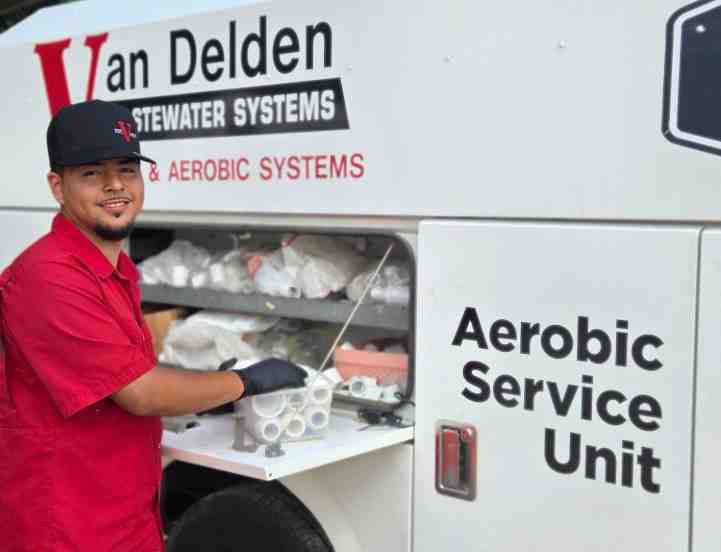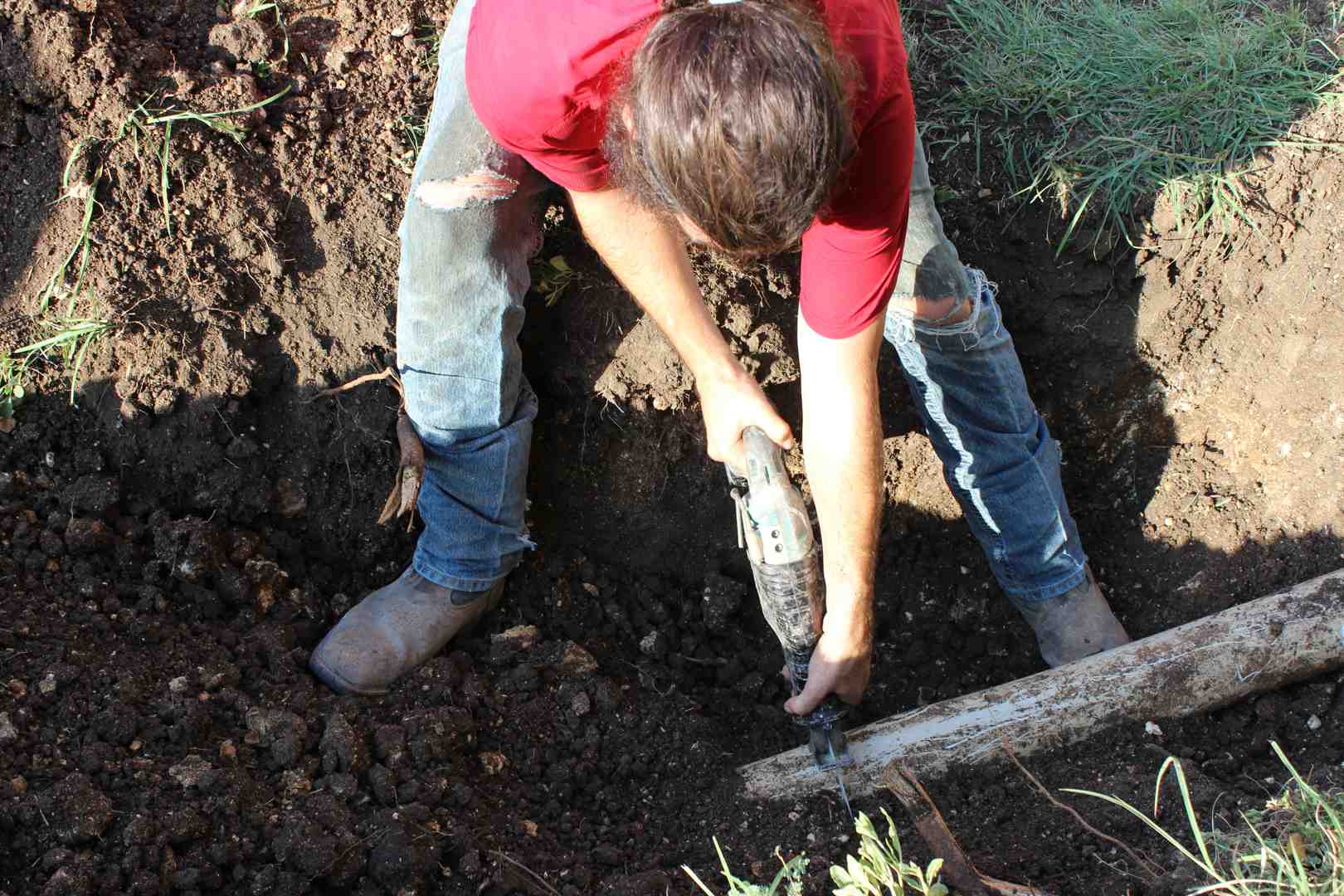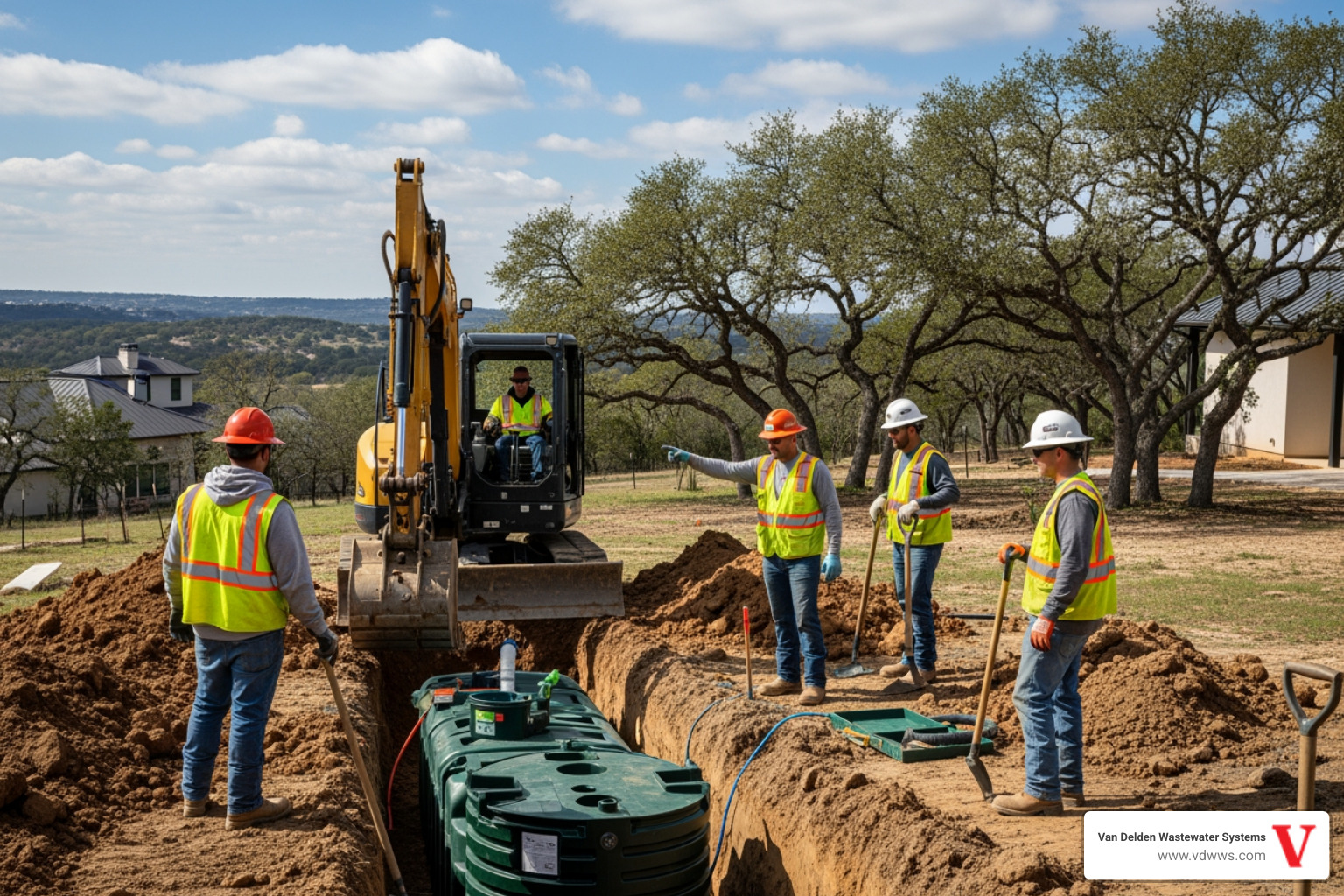Landscaping might seem like a purely visual upgrade, but how and where you make changes in your yard can directly affect your septic system, especially your drainfield. In San Antonio, where many homeowners enjoy customizing their outdoor spaces with new plants, patios, or outdoor structures, it’s common to overlook what’s going on beneath the surface. A landscaping project that doesn’t take your septic layout into account could lead to costly repairs or major disruptions to your system’s function.
Because your drainfield plays a big part in filtering wastewater safely into the soil, it needs to stay clear, undisturbed, and functioning without pressure or blockage. Homeowners in San Antonio often deal with hard clay soil or dry summers, which can affect how landscaping choices interact with this buried system. If your yard work accidentally compresses soil, damages pipes, or adds too much moisture in the wrong place, it can lower the efficiency of your septic system and even cause backups.
How Landscaping Affects Your Drainfield
A drainfield is the part of your septic system where filtered wastewater is released into the soil through a network of perforated pipes. This setup works only when the surrounding soil stays loose, drains well, and doesn’t get weighed down. When landscaping changes put extra pressure on this area or block the natural flow of wastewater, it weakens the whole system.
In and around San Antonio, common landscaping projects can unknowingly create problems for your drainfield. Here’s how they can interfere:
- Tree roots: Some trees planted near the drainfield send roots deep underground, where they can grow into and clog the drainage pipes. Oaks, willows, and other fast-growing species are known for root spread.
- Heavy equipment and vehicles: Driving trucks or construction machines over the drainfield area while doing major yard renovations can crush the pipes or pack down the soil, which limits how well water moves through it.
- Soil compaction: Even walking or placing heavy items on the drainfield too frequently can press the soil tightly together. This reduces its ability to absorb and treat the wastewater, causing buildup or surface pooling.
Think of your drainfield like a sponge. If you squeeze it too hard or keep pressing it down repeatedly, it can’t soak up anything properly anymore. That’s why protecting it from stress starts with planning any landscaping changes carefully and understanding where that sensitive underground area sits in your yard.
Common Landscaping Practices That Can Damage a Drainfield
Many homeowners add beauty or function to their yard without realizing certain upgrades can damage the drainfield below. If you’re planning changes to your outdoor space, avoid putting permanent or water-loaded features on top of the drainfield area. Risky choices include:
1. Ponds or water features – These add extra moisture to the drainfield area. When your drainfield is already handling wastewater, added surface water can force the system to work too hard, increasing the chances of oversaturation or waterlogging.
2. Large trees and deep-rooted plants – Some shrubs and trees have powerful root systems that can travel long distances underground, pushing into drainage lines or cracking piping. Even if the plant looks far enough away now, roots will expand over time.
3. Driveways, patios, or sheds – Any hardscaping elements that cover the drainfield can block air circulation and push down on the soil. These additions not only stress the soil structure but also keep technicians from accessing it for future service.
Adding attractive features to your backyard is fine, but they need to be placed in areas that won’t do long-term damage to your septic system’s performance. If you're unsure about where your drainfield sits, a professional check can help you plan smarter and avoid trouble later.
Preventive Measures to Protect Your Drainfield
Once you know where your drainfield is located and how sensitive it is to pressure and excess moisture, the next step is preventing problems before they start. Homeowners in San Antonio have plenty of ways to keep their landscaping functional and attractive without causing drainfield damage.
Start by giving the drainfield some breathing room. Avoid planting trees or water-thirsty plants near it. Native grasses, shallow-rooted flowers, or ground covers are better suited for this part of the yard. These plant types help control erosion without interfering with underground components.
Use the list below as a guide for proactive steps:
- Choose low-impact plants: Stick to shallow-rooted varieties like wildflowers, clover, or ornamental grasses.
- Skip construction on top of the area: Don’t build patios, decks, sheds, or other structures on the drainfield. These block air movement and crush pipes.
- Use flagged boundaries: Mark the drainfield boundary with flags, stones, or other subtle markers so future projects don’t disturb it by mistake.
- Direct runoff away: Make sure gutter downspouts and French drains don't release water over the drainfield zone.
- Schedule regular checks: Our technicians can evaluate system health and give landscaping layout suggestions before you begin a project.
A good example is when a homeowner in San Antonio wanted to install a stone pathway through their backyard but realized the planned route would go across their drainfield. With a quick check by our team, the path was redirected, saving extensive future repairs.
Keep in mind, even small features like a firepit or a compost bin could accidentally cause soil compacting if placed over this area. Planning before you plant or build remains the best way to protect your system.
Why Drainfield Cleaning Plays a Key Role in San Antonio
In San Antonio’s dry climate, keeping your drainfield clear and functional can be harder than it appears. Layers of clay soil and long stretches of dry weather followed by sudden rains can lead to poor drainage. That’s where regular drainfield cleaning becomes even more important.
When a system ages or is overused, solids and other materials may build up in the drainfield area, especially if the tank hasn’t been cleaned regularly. That buildup blocks proper flow and pushes the system toward saturation, meaning wastewater has nowhere to go. Cleaning the drainfield allows the system to recover by restoring the soil’s natural absorption ability.
Our professionals recommend drainfield cleaning when there are early signs of trouble, such as:
- Water pooling above the drainfield
- Slow drains inside the home
- Strong odors in the yard or near plumbing
- Gurgling sounds from toilets or sinks
Drainfield cleaning isn’t the same as tank pumping. The focus is different. It’s about restoring flow through the soil and pipe network once it begins to clog. And in San Antonio, local soil structure and intermittent drought make proactive cleaning even smarter.
Failing to clean it when needed often leads to full system failure, which means full replacement, not just repair. That cost alone makes regular cleaning worthwhile.
How Landscaping and Maintenance Work Together for Long-Term Results
Landscaping doesn’t need to be put on hold just because you have a septic system. In fact, yard features and septic longevity can go hand in hand when choices are made with the drainfield in mind. Choosing lower-impact lawn accents and planting with purpose allows your yard to thrive without shortening your system's life.
Skipping maintenance altogether poses bigger risks. Overlooked septic tanks or clogged lines can silently impact the drainfield without obvious warning signs. That’s why pairing good landscaping choices with scheduled maintenance keeps your system in better shape long-term.
Our technicians have seen situations where homeowners thought their landscaping had nothing to do with system problems, until crushed pipes, surface pooling, or soft spots in the yard gave it away. When both areas, landscaping and maintenance, work together, those issues are far less likely to happen.
Understanding how these parts affect one another helps property owners in San Antonio manage their wastewater systems more sustainably without giving up the appearance or layout of their outdoor spaces.
Keep Your Drainfield Safe and Functional
Every yard has its own challenges, but certain choices have a bigger effect on your septic system than most people think. The drainfield is often out of sight, and that makes it easy to forget during your next yard project. But whether you’re planting a tree or laying down stepping stones, knowing what’s underneath matters just as much as the final look above the ground.
In San Antonio, keeping a drainfield clear, level, and dry enough to function properly can prevent serious plumbing issues months or years down the line. With a little planning, and with the help of regular professional checks and cleaning, you’ll maintain both a healthy septic system and a safe, usable outdoor space.
For homeowners in San Antonio, making informed landscaping choices and scheduling regular maintenance can prevent unexpected septic issues. To help protect your system and avoid costly repairs, consider the benefits of professional drainfield cleaning in San Antonio. For a quick estimate or to book a service visit, please contact us today and see how Van Delden Wastewater Systems can support your septic system's long-term performance.
Customer Reviews
Peter was personable, professional and thorough. Highly recommend Van Delden. You might be able to find a cheaper company but not better!
On time. 100% professional, knowledgeable, and courteous. Very helpful and straightforward. That is the bar all businesses should strive for.
It has been a pleasure working with your company. Not only did y’all communicate very well but your workers were always polite! Thank you!
“I thank Van Delden for such prompt service. Honest people are hard to come by these days. I will certainly recommend Van Delden to anyone! Jesse is an upstanding young man and very nice to talk to. I thank everyone at Van Delden for taking such good care of me.”
This is just a note to thank you for explaining the problem with my system. You didn’t have to be so kind and I appreciate your good business ethics and time spent. In the future you will have mine in return!






